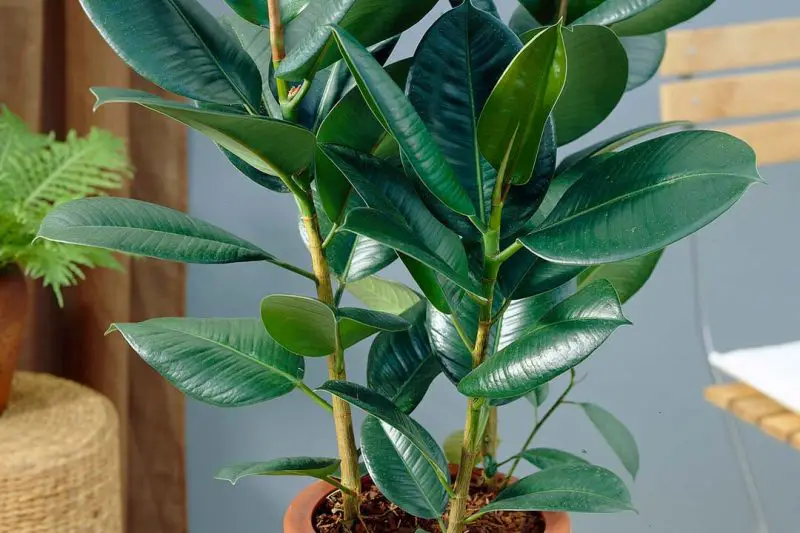Ficus trees, commonly called fig trees, are some of the most popular indoor plants because of their glossy, attractive leaves and their excellent ability to adapt to indoor environments. Species such as the Ficus benjamina, Ficus elastica (rubber plant), and Ficus lyrata (fiddle-leaf fig) are widely grown as decorative houseplants. However, many plant owners struggle to keep ficus trees healthy, as they can be sensitive to changes in light, temperature, and watering routines. Understanding how to care for a ficus tree the right way is essential if you want to enjoy lush foliage and steady growth for years to come.
Caring for a ficus tree involves replicating its natural tropical environment as much as possible. Native to Asia and parts of Australia, ficus trees thrive in warm, humid conditions under bright but filtered light. Indoors, providing proper light exposure, consistent watering, and adequate humidity can make the difference between a thriving ficus and one that drops its leaves in stress. With the right care routine, your ficus tree can grow strong and healthy, becoming an eye-catching feature in your home or office.
Table of Contents
Understanding the Natural Growth Habits of a Ficus Tree

Ficus trees in their natural habitat grow as large shrubs or tall trees, often forming aerial roots and dense canopies. Their growth habits explain why they need consistent care indoors. They prefer bright, indirect sunlight and well-draining soil, with moderate to high humidity levels. Some species can tolerate short periods of neglect, but drastic changes in their environment can lead to leaf loss.
The natural growth pattern of ficus trees is evergreen, which means they hold onto their leaves year-round when conditions are ideal. However, they can shed leaves when stressed by sudden environmental changes. Understanding their natural rhythms helps you anticipate what they need at different stages of growth and why consistency is crucial for maintaining healthy foliage.
Providing the Best Light Conditions for Healthy Growth
Light is one of the most important factors in ficus tree care. These plants thrive in bright, indirect sunlight, similar to the dappled light they receive under tree canopies in their native habitat. Placing your ficus tree near an east- or south-facing window ensures it receives enough light without direct exposure that can scorch its leaves. If grown in very low light, ficus trees may lose leaves and grow more slowly, while excessive direct sunlight can burn their foliage.
If natural light is limited, using grow lights can help maintain healthy growth, especially during the winter months when daylight hours are shorter. Rotating the pot every few weeks ensures even light exposure, preventing the plant from leaning toward one direction. Maintaining a consistent light level is key because sudden changes, such as moving the plant from a bright spot to a dim corner, often result in leaf drop.
Watering a Ficus Tree Correctly
Proper watering is essential for a healthy ficus tree, as overwatering or underwatering can both cause problems. Ficus trees prefer evenly moist soil but are highly sensitive to waterlogged conditions, which can lead to root rot. Allowing the top inch of soil to dry out between waterings is generally recommended. Testing the soil with your finger before watering helps you gauge moisture levels accurately.
The amount of water needed varies depending on the season. During the active growing season in spring and summer, ficus trees require more frequent watering, while in fall and winter, when growth slows, watering should be reduced. Always use room-temperature water to avoid shocking the roots, and ensure the pot has proper drainage to allow excess water to escape. Yellowing leaves often signal overwatering, while dry, crispy leaves usually indicate the plant needs more water.
Choosing the Right Soil and Pot for Optimal Growth
Soil quality plays a critical role in keeping ficus trees healthy. A well-draining potting mix is essential to prevent root rot while still retaining enough moisture for steady growth. A peat-based mix with added perlite or sand works well because it balances drainage and water retention. Ficus trees also appreciate soil that is slightly acidic to neutral, with a pH between 6.0 and 7.0.
When selecting a pot, choose one with adequate drainage holes to prevent excess water buildup. A pot that is too large can retain unnecessary moisture, increasing the risk of root problems. Repotting every two to three years, or when roots begin to outgrow the pot, provides fresh nutrients and allows for continued healthy growth. Spring is the best time to repot, as this coincides with the plant’s active growth period.
Maintaining Proper Temperature and Humidity
Ficus trees are tropical plants, so they thrive in warm, stable temperatures. The ideal range is between 60°F and 75°F (15°C to 24°C). They are highly sensitive to temperature fluctuations, so avoid placing them near heaters, air conditioners, or drafty windows. Cold drafts can cause stress, resulting in leaf drop.
Humidity is another crucial factor. Ficus trees prefer moderate to high humidity levels, similar to their native environment. Indoor heating during winter often dries the air, causing leaves to develop brown edges or drop prematurely. Increasing humidity with a humidifier, placing the pot on a pebble tray filled with water, or grouping plants together helps create a more suitable environment for healthy growth.
Feeding and Fertilizing for Vibrant Leaves
Ficus trees benefit from regular feeding during their active growing season. A balanced, water-soluble fertilizer applied every two to four weeks in spring and summer provides the nutrients they need for lush, green leaves and strong stems. A 10-10-10 or similar balanced formula works well, but always dilute the fertilizer to half strength to avoid over-fertilizing, which can damage the roots.
During fall and winter, reduce or stop fertilizing, as the plant’s growth naturally slows down. Over-fertilization during this dormant period can lead to salt buildup in the soil, causing brown leaf tips. Flushing the soil occasionally with plain water helps prevent this problem.
Pruning and Cleaning for Healthy Foliage
Pruning is an important part of ficus tree care, helping maintain its shape and encouraging new growth. Trimming back leggy stems promotes a fuller appearance and prevents the plant from becoming too tall or unmanageable indoors. The best time to prune is in spring or early summer when the plant is actively growing.
Cleaning the leaves is equally important, as dust buildup can block sunlight and reduce photosynthesis. Wiping the leaves gently with a damp cloth keeps them shiny and healthy while also allowing you to inspect the plant for pests or signs of disease. Regular cleaning improves overall plant health and keeps it looking vibrant.
Preventing and Solving Common Problems
Ficus trees are relatively hardy, but they are sensitive to environmental changes, which can lead to leaf drop. Sudden changes in light, temperature, or watering routine often stress the plant. Keeping conditions consistent is the best way to prevent this problem.
Pests such as spider mites, mealybugs, and scale insects sometimes infest ficus trees, especially in dry indoor environments. Checking the undersides of leaves regularly and wiping them with insecticidal soap or neem oil can control minor infestations. Fungal issues are rare but can occur if the soil remains consistently wet, so proper watering habits are crucial.
Encouraging New Growth and Long-Term Care
Long-term care for a ficus tree involves maintaining stable conditions and providing seasonal adjustments. Encouraging new growth requires consistent light, proper fertilization, and occasional pruning. Repotting every few years refreshes the soil and gives the roots room to expand, ensuring steady growth.
Ficus trees can live for many years indoors when cared for properly. Over time, they may develop thicker stems and a tree-like appearance, making them a striking centerpiece in any room. With patience and attention to their needs, your ficus tree can thrive for decades, providing lush greenery and improving indoor air quality.
FAQs About Caring for a Ficus Tree
Why is my ficus tree dropping leaves?
Leaf drop is often caused by sudden environmental changes, such as moving the plant, changing light conditions, or inconsistent watering. Keeping the environment stable usually resolves the issue.
How often should I water my ficus tree?
Water when the top inch of soil feels dry. Overwatering can lead to root rot, while underwatering causes dry, brittle leaves.
Can I grow a ficus tree in low-light conditions?
Ficus trees prefer bright, indirect light. While they can tolerate lower light, growth will slow, and they may shed leaves more frequently.
When should I repot my ficus tree?
Repot every two to three years or when roots outgrow the pot. Spring is the best time for repotting, as the plant is actively growing.
Do ficus trees need high humidity indoors?
Moderate to high humidity is ideal. If indoor air is too dry, especially in winter, increase humidity with a humidifier or pebble tray.
Conclusion
Learning how to care for a ficus tree the right way for healthy growth is about consistency and understanding its natural needs. By providing bright, indirect light, stable temperatures, and the right balance of water and nutrients, you can keep your ficus tree lush and thriving for years. Regular pruning, cleaning, and repotting further encourage strong, healthy growth. With the right care, a ficus tree can become one of the most rewarding indoor plants, adding beauty and a touch of nature to any living space.






